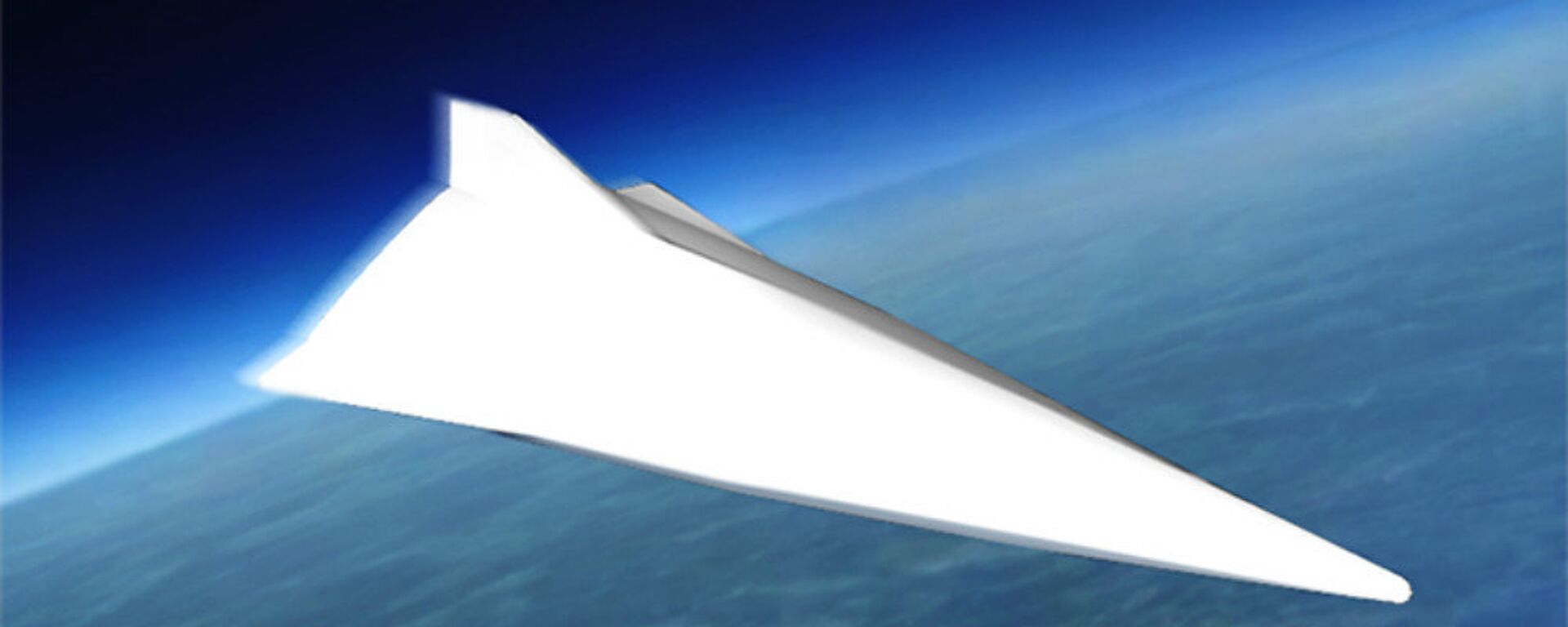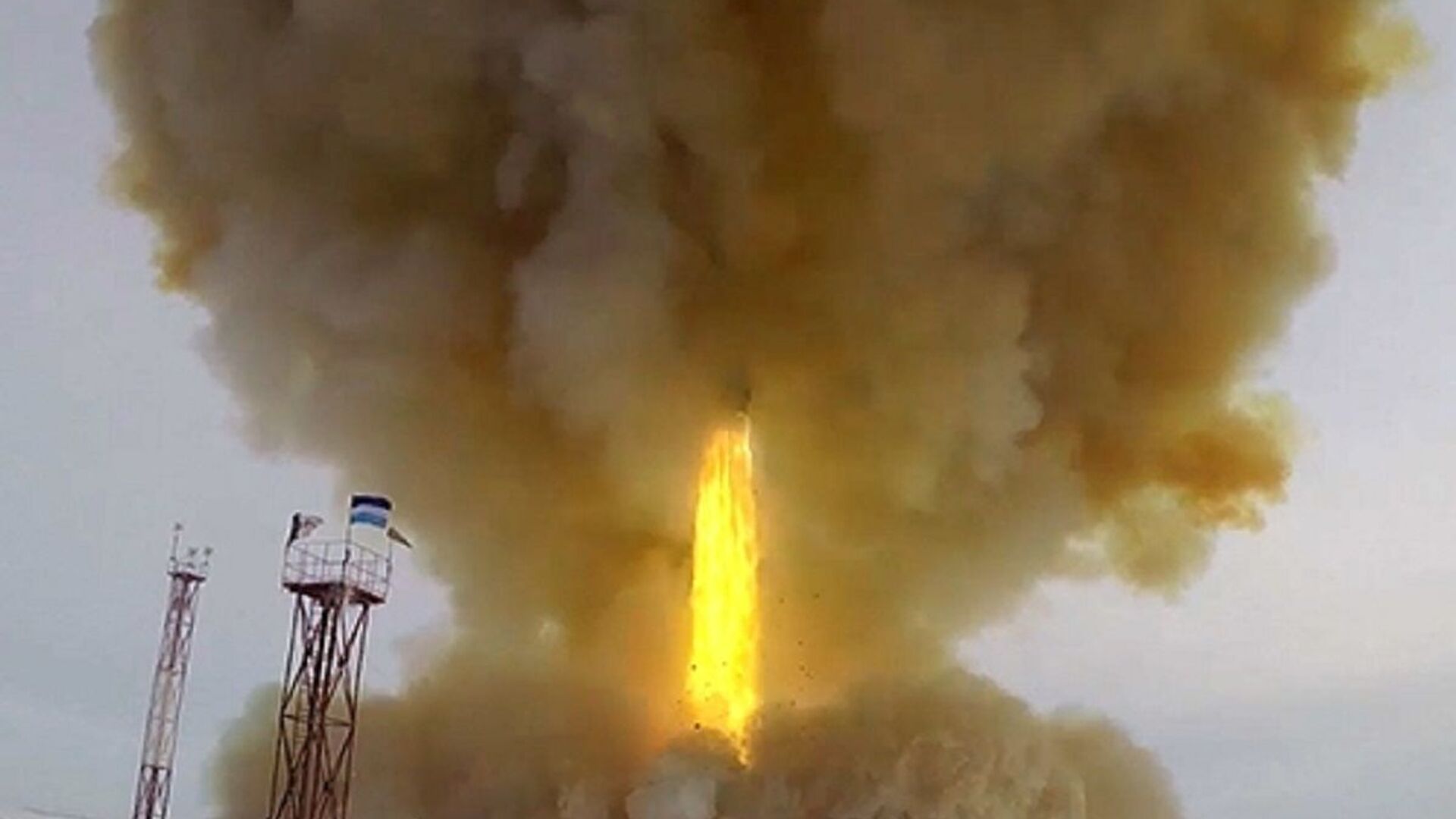https://sputnikglobe.com/20211221/pentagon-struck-new-contract-seeking-ways-to-counter-russian--chinese-hypersonics-report-says-1091700632.html
Pentagon Struck New Contract Seeking Ways to Counter Russian & Chinese Hypersonics, Report Says
Pentagon Struck New Contract Seeking Ways to Counter Russian & Chinese Hypersonics, Report Says
Sputnik International
In December 2021, Pentagon signed a research contract with aerospace company Stratolaunch to understand how to engage and intercept hypersonic threats.
2021-12-21T17:07+0000
2021-12-21T17:07+0000
2021-12-21T17:07+0000
newsfeed
world
us
russia
asia
china
hypersonic weapons
avangard
hypersonic glider
https://cdn1.img.sputnikglobe.com/img/07e4/09/17/1080551499_0:76:1200:751_1920x0_80_0_0_a9ce32fdd9eade965f4fff7c9da960a3.jpg
A December contract struck by the US Missile Defence Agency (MDA) and the aerospace company Stratolaunch is aimed at matching and defeating Russian and Chinese hypersonic arms, suggests Asia Times' contributor Gabriel Honrada.Stratolaunch announced on 8 December that it had concluded a research contract with the MDA, the Pentagon's section that works on ballistic missile defence systems for the US.On 15 December, Stratolaunch released further updates concerning the new project. The firm is preparing to complete its next set of Roc carrier aircraft test flights. In April 2021, the company's carrier aircraft – the world's largest airplane which is designed to launch hypersonic and space vehicles – performed its second test flight over California's Mojave Desert.What's more important, the firm is planning to examine and assess the applicability of a "re-usable hypersonic testbed system for Missile Defense Systems (MDS) applications".It boasts of making considerable progress in building its first two Talon-A test vehicles: TA-0 and TA-1. The two gliders are rocket-powered, autonomous, and reusable. Launched from Roc carrier aircraft, they are capable of carrying customised payloads at speeds above Mach 5 (3806.04 miles per hour), according to the producer.The TA-1 is expected to start its power-on testing by the end of year, "keeping the company on track to begin hypersonic flight testing in 2022 and to deliver services to government and commercial customers in 2023", according to Stratolaunch.Gabriel Honrada notes that the MDA-Stratolaunch contract is the latest move in the US efforts to develop "hypersonic weapons and countermeasures", suggesting that Talon-A vehicles would simulate nothing other than Russian and Chinese hypersonic gliders.Earlier this month, The Drive's Joseph Trevithick voiced a similar idea observing that the Talon-A design "could be viable for use as a surrogate for hypersonic weapons that use unpowered boost-glide vehicles, such as Russia's Avangard or China's DF-17".Trevithick also compared Talon-A with "the mysterious fractional orbital bombardment system-like weapon", or FOBS, that China allegedly tested earlier this year, according to the Financial Times. Beijing vehemently denied testing any hypersonic vehicles of that kind and shredded the FT's October 2021 report.However, the Pentagon and American defence observers have raised the alarm over the alleged Chinese FOBS. First, the supposed weapons system is hard to detect and track; second, it is also difficult to quickly attribute such a system to a particular country. On top of this, "defenses and tracking sensors against that sort of threat do not presently exist [in the US]", acknowledges The Hill.The US is currently racing against the clock to catch up with its geopolitical competitors, according to Politico. Last month, Gen. David Thompson, vice chief of space operations, told the Halifax International Security Forum that the Pentagon is "not as advanced as the Chinese or the Russians in terms of hypersonic programmes". Although the DoD's programmes are up and running, the US Army "isn’t slated to field its first missile until 2024", Politico underscored.
https://sputnikglobe.com/20211130/us-space-force-raises-alarm-over-chinas-orbital-hypersonic-weapons-us-cant-combat-1091148959.html
china
Sputnik International
feedback@sputniknews.com
+74956456601
MIA „Rossiya Segodnya“
2021
News
en_EN
Sputnik International
feedback@sputniknews.com
+74956456601
MIA „Rossiya Segodnya“
Sputnik International
feedback@sputniknews.com
+74956456601
MIA „Rossiya Segodnya“
hypersonic weapons, glider, mach 5, the us missile defence agency (mda), stratolaunch, talon-a test vehicles, russia, avangard, china, df-17, fobs
hypersonic weapons, glider, mach 5, the us missile defence agency (mda), stratolaunch, talon-a test vehicles, russia, avangard, china, df-17, fobs
Pentagon Struck New Contract Seeking Ways to Counter Russian & Chinese Hypersonics, Report Says
The Pentagon is lagging behind Russia and China in terms of hypersonic weapons and countermeasures, according to American generals. The US has embarked on new programmes to catch up with its competitors, admitting, however, that the Army is unlikely to field its first hypersonic missiles until 2024.
A December contract struck by the US Missile Defence Agency (MDA) and the aerospace company Stratolaunch is aimed at matching and defeating Russian and Chinese hypersonic arms,
suggests Asia Times' contributor Gabriel Honrada.
Stratolaunch announced on 8 December that it had concluded a research contract with the MDA, the Pentagon's section that works on ballistic missile defence systems for the US.
"The study will utilise our test service to augment the Department of Defence flight test resources in order to understand how to engage and intercept hypersonic threats", the company's statement said.
On 15 December, Stratolaunch released further updates concerning the new project. The firm is preparing to complete its next set of Roc carrier aircraft test flights. In April 2021, the company's carrier aircraft – the world's largest airplane which is designed to launch hypersonic and space vehicles –
performed its second test flight over California's Mojave Desert.
What's more important, the firm is planning to examine and assess the applicability of a "re-usable hypersonic testbed system for Missile Defense Systems (MDS) applications".
It boasts of making considerable progress in building its first two Talon-A test vehicles: TA-0 and TA-1. The two gliders are rocket-powered, autonomous, and reusable. Launched from Roc carrier aircraft, they are capable of carrying customised payloads at speeds above Mach 5 (3806.04 miles per hour), according to the producer.
"This capability enables routine access to the hypersonic flight environment, which is critical for scientific research, technological development, and component demonstration", the company stated.
The TA-1 is expected to start its power-on testing by the end of year, "keeping the company on track to begin hypersonic flight testing in 2022 and to deliver services to government and commercial customers in 2023", according to Stratolaunch.
Gabriel Honrada notes that the MDA-Stratolaunch contract is the latest move in the US efforts to develop "hypersonic weapons and countermeasures", suggesting that Talon-A vehicles would simulate nothing other than Russian and Chinese hypersonic gliders.
Earlier this month, The Drive's Joseph Trevithick voiced a similar idea
observing that the Talon-A design "could be viable for use as a surrogate for hypersonic weapons that use unpowered
boost-glide vehicles, such as Russia's Avangard or China's DF-17".
Trevithick also compared Talon-A with "the
mysterious fractional orbital bombardment system-like weapon", or
FOBS, that China allegedly tested earlier this year, according to the Financial Times. Beijing vehemently denied testing any hypersonic vehicles of that kind and shredded the FT's October 2021 report.

30 November 2021, 16:32 GMT
However, the Pentagon and American defence observers have raised the alarm over the alleged Chinese FOBS.
First, the supposed weapons system is hard to detect and track;
second, it is also difficult to quickly attribute such a system to a particular country. On top of this, "defenses and tracking sensors against that sort of threat do not presently exist [in the US]",
acknowledges The Hill.
The US is currently racing against the clock to catch up with its geopolitical competitors,
according to Politico. Last month, Gen. David Thompson, vice chief of space operations, told the Halifax International Security Forum that
the Pentagon is "not as advanced as the Chinese or the Russians in terms of hypersonic programmes". Although the DoD's programmes are up and running, the US Army "isn’t slated to field its first missile until 2024", Politico underscored.



